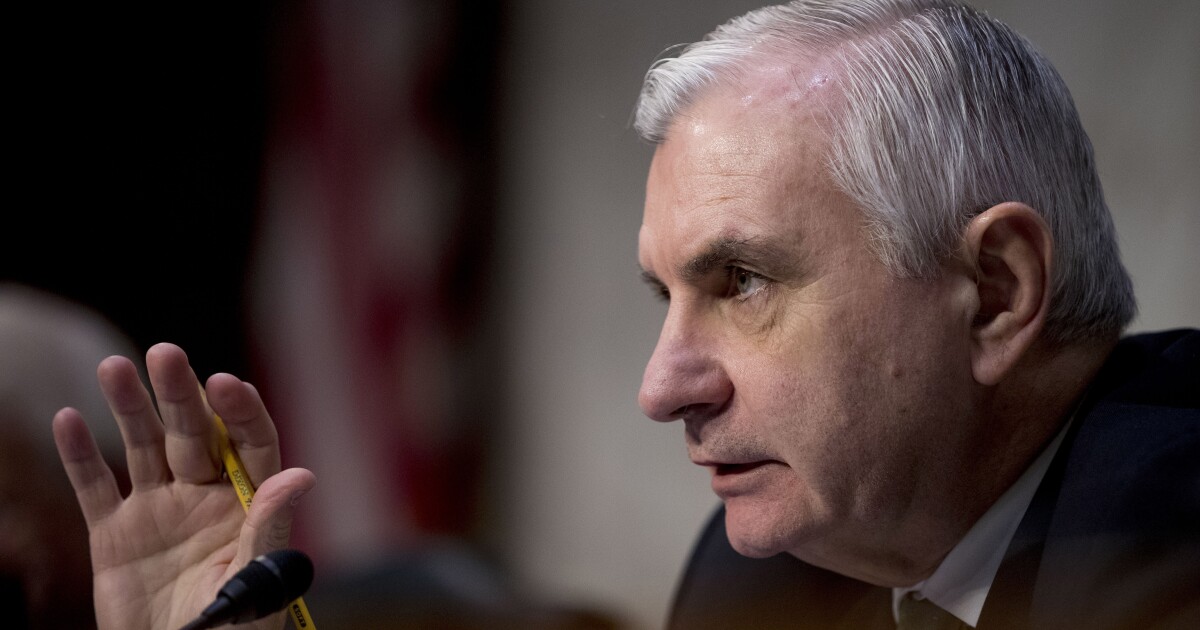

The chairman of the Senate Armed Services Committee said he believes that President Joe Biden made the right call to follow senior military leaders’ guidance against shooting the Chinese spy drone down over the United States.
Sen. Jack Reed (D-RI) said that because of it, the U.S. will, in fact, glean more from the downed balloon than China will.
“I thought the president’s conduct was extremely appropriate,” he told reporters Tuesday morning during a Defense Writers Group event. “We’ll probably gain more intelligence from this operation than the Chinese, which makes them look kind of, pick a term, but it’s an awkward moment for the Chinese, and that’s the way we have to, I think, we should do it.”
TRUMP’S LAST PENTAGON CHIEF PANS BIDEN ‘KEYSTONE KOPS’ CHINA BALLOON RESPONSE
“Well, they can actually get probably more information from the satellites that are already flying lower than a balloon. So, it’s very difficult to determine why they did this. I think one of the key factors we have to look at is, what was the point? And who ordered it? This could be one of those situations where this was not a policy decision made by Xi but something below,” the chairman added, later predicting the U.S. is “going to recover a great deal of the equipment.”
The balloon entered U.S. airspace on Jan. 28 over the Alaskan Aleutian Islands, entered Canadian airspace, and then reentered U.S. airspace over northern Idaho on Jan. 31 and while Biden ordered the military to shoot it down the next day, he followed military advisers’ recommendations to wait, in part because there were concerns about the damage the debris could cause and because they had an opportunity to learn from it.
The military ultimately shot it down on Feb. 4 once it reached the Atlantic Ocean off the coast of the Carolinas, and the Navy is now attempting to recover the remnants of it.
Conversely, Republicans have criticized the president’s decision, arguing that the balloon should have been shot down before entering U.S. airspace or shortly thereafter.
Gen. Glen VanHerck, commander of U.S. Northern Command and North American Aerospace Defense Command, told reporters on Monday that this incident allowed them to “collect intel where we had gaps on prior balloons,” which is significant given he acknowledged a “domain awareness gap” resulted in the military not recognizing in real-time three previous instances of a Chinese surveillance balloon hovering over the U.S. during the Trump administration.
“There was a potential opportunity for us to collect intel where we had gaps on prior balloons,” VanHerck explained. “And so, I would defer to the intel community, but this gave us the opportunity to assess what they were actually doing, what kind of capabilities existed on the balloon, what kind of transmission capabilities existed, and I think you’ll see in the future that the time frame was well worth its value to collect over.”
CLICK HERE TO READ MORE FROM THE WASHINGTON EXAMINER
VanHerck said the assessment was that the actual balloon was “up to 200 feet tall,” while he described the payload “as a jet airliner type of size, maybe a regional jet” and said it probably weighed “in excess of a couple thousand pounds,” which in part explains the advice not to bring it down over the U.S.
National Security Council coordinator John Kirby told reporters on Monday that “some remnants” had been recovered off the ocean surface.






